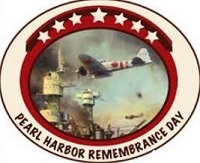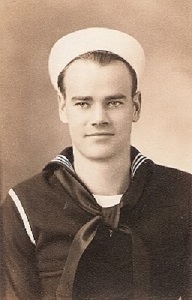Robert L. Griffith


Dallas Morning News
August 16, 1945
Ten Texans
On Indianapolis
Found on Guam
Ten Texans who survived the tragic sinking of the cruiser Indianapolis
were found in the Navy Hospital on Guam by Wick Fowler, war
correspondent of The News. Other Texans, he cabled, might have been
taken to Leyte by rescue ships. The Guam list:
Raymond B. McClain, boat-swain's mate, Route 2, LaRue, Henderson County.
Mike Obledo, seaman first class, 521 1/2 West Romana, San Antonio.
James D. Price, seaman first class, Route 1, Ravenna, Fannin County.
Chester O. Reeves, seaman first class, Route 1, Paris, Lamar County.
Richard Ramirez, seaman first Class, 320 Montana, El Paso.
John T. Ashford, airplane radio technician, Lubbock.
Robert L. Griffin, seaman first class, Pottsboro, Grayson County.
William A. Johnson, seaman first class, Midway, Madison County.
Lt. Charles B. McKissick, Abilene.

POTTSBORO WAR
HERO RESCUED FROM THE JAWS OF DEATH
People from Pottsboro seem to be involved in places and
events of import all over the world. One
such person was
Robert Lee Griffith, son of Pottsboro pioneers, William
Griffith and Dadie Cook, who came from Bosque County Texas.
In 1945 in World War II, Robert was serving
as a Seaman First Class on the USS Indianapolis, a heavy cruiser in the Pacific
theater.
With Robert on board, the Indianapolis steamed out of San
Francisco Bay on July 16, wrapped in a heavy cloak of secrecy. In her hold, she
carried the atomic bomb that three weeks later would be dropped on the Japanese
city of Hiroshima. She hurried, unescorted, to the island of Tinian where she
unloaded her lethal cargo on July 26. Her mission accomplished, the
Indianapolis then began a journey into Hell that would end with the worst naval
disaster in U.S. history.
She sailed to the island of Guam and was ordered to the
Leyte Gulf in the Philippines to prepare for the invasion of Japan. Traveling
without escort, her voyage would take her through an ocean infested with
Japanese submarines and sharks.
At a few minutes past midnight on July 30, 1945, two
Japanese torpedoes tore into her side, igniting an explosion that broke the
ship in two. It took only twelve minutes for the ship to slip beneath the sea. When
the survivors gathered in the water, one man remembered this: "I led the men in prayer, asking our
Lord to support us during this time of peril. I quoted the old Navy hymn, 'Oh
hear us when we cry to Thee, for those in peril on the sea.' Of her crew of 1,196, an estimated 900
survived the explosion - but the worst was yet to come.
No alarm was raised when the ship failed to arrive at its
destination. No rescue forces were dispatched to find the missing ship - its
sinking went unnoticed. For four days a dwindling number of survivors fought a
losing battle of life and death. There
was no water or food. Men died from
drinking salt water, which caused dehydration.
They died from injuries received during the sinking. Some went mad from lack of water,
hallucinating and fighting each other, causing deaths. Some lost hope and just sunk beneath the
waves. Some did not have life jackets
and could not last four days. Even if
men had jackets, they were only made to last 48 hours. After 110 hours in the
water, the material became water-logged
and the men began to sink into the
water while they slept and drowned.
Then, there were the sharks. The
sharks began attacking when the sun rose and continued their assault throughout
the ordeal.
On August 2, after four days, a man on a plane happened to
have a stiff neck and turned his head to stretch it, seeing the floating
survivors, and broadcast their position. Near-by ships rushed to the scene and
began to pluck the sailors out of the water. A tally made at the completion of
the rescue revealed that only 317 of the original estimated 900 who escaped the
sinking ship survived their ordeal.
Pottsboro native, Robert Lee Griffith, Seaman First Class
was rescued and taken to the Navy Hospital on Guam to recover according to war
correspondent Wick Fowler. After four
days in the water, Robert was rescued from the “Jaws” of death, four days after
that, on August 6, 1945, the bomb he had helped deliver was dropped on
Hiroshima, Japan – The beginning of the end of the War.

Eyewitness to History : The Sinking of the USS Indianapolis, 1945
Military Index
Susan Hawkins
© 2024
Grayson County TXGenWeb
|



